There’s no doubt about it: Regular baths are important for your four-footer.
Bathing your dog will not only help keep your pet’s skin clean and coat shiny, it’ll also help ensure he smells good (as most owners already know, many dogs love to roll around in some pretty funky stuff).
But it is important to understand how often you should wash your dog.
If you don’t bathe your filthy fur baby frequently enough, he could start stinkin’ up your home and suffering from coat problems. But, on the flip side, bathing him too frequently may cause an entirely different set of problems.
We’ll try to shed some light on the subject below, by discussing the things you’ll want to consider when trying to figure out how often you should wash your dog.
We’ll also point out some of the problems that excessive bathing can cause and provide some tips to make bath-time proceed more smoothly.
The Bottom Line: How Often Should You Bathe Your Dog?
Different authorities recommend slightly different bathing schedules for dogs.
Some vets recommend bathing your dog once a week or so, while others recommend bathing your pet only once every two or three months. There’s plenty of wiggle room in these estimates, and the ideal bathing frequency for dogs will vary from one individual to the next.
Nevertheless, it is usually appropriate to wash your dog once a month, as well as anytime he gets dirty or starts to smell bad.
But at the end of the day, you’ll want to discuss the issue with your vet and consider the additional factors we discuss below, to figure out the ideal bathing frequency for your furball.
Factors to Consider When Deciding How Often to Bathe Your Dog
Just like with most other dog-related issues, there are no concrete rules regarding bathing frequency.
For example, no dog food is perfect for all pups. You have to consider your pet’s health status, skin condition, physical needs, breed, and a million other things when making your choice.
Determining a suitable bathing schedule is similar. Instead of just arbitrarily deciding to bathe your dog every X number of weeks or months, you’ll need to consider a variety of factors, including those discussed below.
Your Dog’s Breed
Some dog breeds require different bathing schedules than others. We’ll discuss a few notable examples below, but just make sure to research the specific bathing needs of the breed.
- Malamutes, huskies, German shepherds, Labs, golden retrievers and other dogs with ultra-thick or double coats, should be bathed relatively infrequently. Instead, just make sure you brush them regularly, as this will help keep their coat healthy by distributing natural oils and getting rid of loose hair.
- Many “hairless” breeds, such as Chinese crested dogs and Xoloitzcuintin (FYI – that’s the plural for Xoloitzcuintli), require rather frequent baths. This will help keep their skin healthy and reduce the number of blackheads and acne they can suffer from.
- Komondors, Pulis and other breeds with corded coats require regular baths to prevent their cords from developing odors. However, it takes a very long time for them to dry, so you probably don’t want to bathe them more frequently than necessary. If their coat doesn’t dry completely after baths, mold can develop in their cords.
- Long-coated breeds, such as Malteses and collies, require more frequent baths than some other breeds. This is primarily because their long fur will tend to collect more dirt and debris.
- Breeds with unusual coats often have specific bathing requirements. Afghan hounds, for example, may need twice-weekly baths to continue to look their best. Poodles may also benefit from relatively frequent baths.
- Tidy breeds need relatively few baths. Basenjis, Shiba Inus and other breeds with cat-like grooming habits usually do a pretty good job of keeping themselves cleaned, so they need fewer baths than other breeds.
- Dogs with dry or sensitive skin (including many pit bulls, bulldogs and Shar-Peis) may need baths on a relatively normal, one-a-month schedule, but you may need to use a medicated shampoo (more on this later).
- Beagles, basset hounds and other breeds with oily skin often require more frequent baths than other breeds. In some cases, you may need to bathe these breeds every couple of weeks.
Of course, if you have a mixed-breed dog, you’ll want to consider the likely parent breeds. Just discuss the issue with your vet or a professional groomer if you need further guidance.
Your Dog’s Coat Length and Style
As a very general rule, dogs with longer hair will usually require more frequent baths than dogs with short hair. However, there are plenty of exceptions. Dogs with water-repellant coats, for example, shouldn’t be bathed too frequently, as this may strip their coat of the important oils that keep their fur dry.
Your Dog’s Tendency to Get Dirty
If your dog spends most of his time indoors, he won’t need as many baths as a dog who spends his day patrolling the backyard and rolling in the dirt. Similarly, dogs who go run, jump, and play at the local dog park several times a week will probably need more frequent baths than dogs who go for relatively relaxed walks around the neighborhood.
Your Sense of Smell
Some people are more easily offended by stinky dog odors than others, so don’t hesitate to factor that into your bathing-frequency algebra. If you have a sensitive sniffer, you’ll probably want to bathe your dog on the most frequent schedule possible – just be sure that you don’t do so often enough to cause him coat or skin problems.
On the other paw, as long as your dog is clean and you are catering to his breed-specific needs, you can stretch out the time between baths a little more. Just don’t forget to think about the way your dog smells to your vet, the local pet store staff, and the folks at the dog park (not to mention others you may live with).
You don’t want to be the guy or gal who’s famous for having a stinky dog!
Your Pet’s Attitude About Baths
Some dogs like baths, some dogs grudgingly tolerate them, and others will howl, struggle, and hide under the bed to avoid getting in the tub. So, you’ll want to keep your dog’s attitude about baths in mind when determining the optimal bathing frequency.
If your dog hates baths, it’s probably a good idea to limit them as much as possible to avoid upsetting your pooch unnecessarily. Conversely, if your dog doesn’t mind baths, you can bathe your dog as frequently as his skin and coat can tolerate it.
Your Dog’s Health Issues
You may need to tweak your bathing schedule if your dog suffers from any medical issues that affect his skin or coat. For example, dogs with bacterial infections of the skin may need more frequent baths than normal.
Just rely on your vet’s guidance when trying to figure out how often to bathe dogs suffering from health problems.
Flea and Tick Treatments
Don’t forget to check the directions on your pet’s flea and tick medication before giving him a bath. Many topical flea medications rely on the movement of your dog’s skin oils to work. If you bathe your dog too frequently (or too soon after applying the medication) the medicine may not work.
Most topical flea medications instruct owners to avoid baths a few days before and a few days after application.
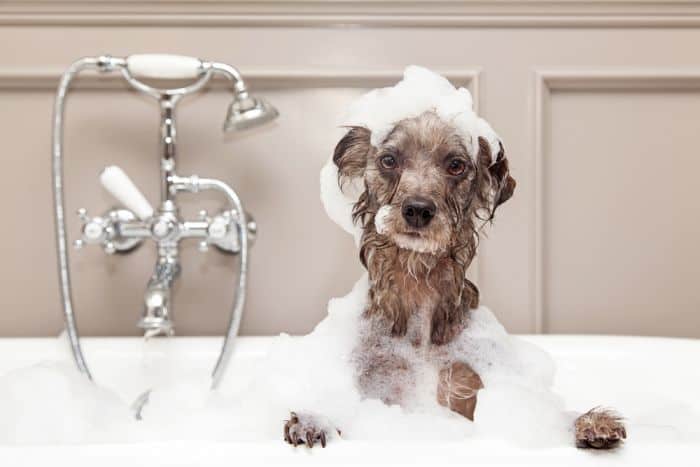
Dog Shampoo: Can You Use Human Shampoo for Your Dog?
The skin and hair of dogs differs from that of humans in a number of ways, but the most noteworthy way involves the pH of your pup’s skin. Dogs have a skin pH that’s essentially neutral, while humans have slightly acidic skin.
So, if you use a human shampoo or soap for your dog, it can end up altering the pH of his skin, which can lead to a host of problems. This means that you’ll usually want to pick up a shampoo that is specifically designed for dogs.
This is not to say that human shampoos are necessarily “toxic” or “dangerous” for dogs, they just aren’t very good for their skin and hair. But don’t worry – most dog shampoos are very affordable, and they’ll also keep your dog looking, feeling, and smelling great.
This doesn’t mean you have to run over to the pet store and buy a doggie shampoo if your dog decides to roll around in rabbit poop or play with an animal carcass in the backyard. If your dog is in urgent need of a bath, and you don’t have a dog shampoo on hand, just go ahead and use the human shampoo you have sitting around (if possible, opt for a baby shampoo, as they’re typically rather gentle on the skin).
But before you pick out a shampoo and break out your debit card, understand that there are a variety of different dog shampoos on the market. So, take the time to pick out one that will work best for your pup.
- Normal Hair: All-purpose shampoos should be fine. Earthbath Dog Shampoo is a good choice, and it’s available in a number of different formulas such as hypoallergenic, orange, tea tree, and puppy!
- Dry Skin: Look for shampoos with moisturizers that contain silks, oils, oak, and wheat protein. Bohdi Dog Oatmeal Shampoo is one popular choice, and it often helps soothe itchy, sensitive skin.
- Smelly Coats: Look for shampoo with deodorizing elements (common in many dog shampoos).
- Puppies: There are some shampoos specifically for puppies, such as Oster Oatmeal Puppy Shampoo.
- Dry Shampoo: If your dog just can’t stand water or traditional baths, consider a dry dog shampoo like one offered by Paw Choice, which uses pomegranate scented waterless foam.
Cleaning Your Canine: How Do You Bathe a Dog?
Experienced dog owners know that most dogs are pretty easy to bathe, while dog-owning newbies may not know where to start. But fear not! We’ll explain the basic procedure below (just remember that some breeds have unique bathing needs).
- Gather all of the necessary tools and supplies. You don’t want to have to stop what your doing and go grab supplies once your dog is sopping wet. Many dogs will use these opportunities to run out of the bathroom and start drying their coat on your carpet or bed.
- Have your dog climb into the tub. Ideally, your dog will hop in voluntarily, but you may need to pick him up and put him inside if he doesn’t like baths (or, if he’s too small to climb in safely).
- Wet your dog thoroughly. This can take a long time for dogs with thick hair, so take your time. Note that many groomers recommend saving a dog’s head and face for last, as this typically causes dogs to shake.
- Apply the shampoo and work it into a lather. Because of the stimulation this provides, many dogs don’t seem to mind this part of the process. Make sure you get all of his cracks and crevices, but don’t get any soap in his eyes, nose, or mouth.
- Fully rinse the shampoo from your dog’s coat. Keep on running water over your dog’s coat until the water is clear. As with the initial wetting, this can take a while – particularly for dogs with thick hair.
- Dry your pup with a towel or let him air dry. Just be sure that he doesn’t get chilly while drying out.
- Treats and praise! If you praise your dog with treats and praise, it’ll help him associate bath time with fun stuff.
Dog-Washing Tips: Making It Easier to Bathe Your Pooch
Once you’ve familiarized yourself with the basic dog-washing procedure described above, take a moment to look over the tips and tricks presented below. These should help make bath time go a little easier for you and your pooch.
- Brush your pooch before bath time. Before bathing your dog, make sure to brush your dog. Otherwise, extra matted hair will hold water and irritate your dog’s skin.
- Keep your dog comfortable. Make sure that your dog is comfortable when taking his or her bath. Some dogs may feel more comfortable if you put an anti-slip mat at the bottom of your tub. For some dog owners, it’s a difficult task just to get your pet into the bathtub. If your dog is frightened at bath time, you may need to take on extra work to teach your pooch to like water.
- Make sure the water temperature is right. Pets are very sensitive to hot and cold temperatures, so use lukewarm water. Don’t use water any warmer than what you’d use for a human baby.
- Find the right shampoo. As noted earlier, you’ll want to make sure you are using a shampoo that is a good fit for your dog. When you apply shampoo to your dog’s coat, make sure it stays away from his mouth and eyes. Human shampoo isn’t toxic for dogs, but they often contain fragrances or ingredients that can irritate a dog’s skin, so it’s best to go with a canine-specific shampoo outside of emergencies.
- Consider picking up a canine hair dryer. You don’t want to use a human hair dryer, as they typically get too hot for a dog’s skin. However, you may want to invest in a canine hair dryer if you’d rather help him dry quickly.
- Start early. The sooner you begin introducing your dog to baths, the more likely he’ll learn to accept baths as a regular part of life. You can start bathing most puppies at six to eight weeks of age.
- Consider using an outdoor bath tub to keep your home cleaner. There are a variety of bathing stations and hose attachments on the market that you can use outside. These will often make it easier to bathe your pup, and they’ll help protect your home from the inevitable mess than accompanies doggie baths.
- Don’t wash small dogs or puppies in your kitchen sink. Though you surely love your little fur baby, he’s likely covered in dirt, debris and bacteria. These things could end up getting splashed all over your kitchen, which may cause you or your family to get sick later. Just bathe him in your bathtub, a specially designed dog-washing station or a kiddie swimming pool.
One last thing: Don’t forget to prepare for the zoomies! Many pups like to run around the house at warp speed after getting out of the bath.
There’s nothing wrong with this (and it is pretty hysterical), but you want to plan ahead. Close any doors to rooms you don’t want your dog to enter and be sure there’s nothing dangerous laying around before you get started.
You may also want to warn any two-footers in your home to take cover before releasing your high-speed hound!
Keeping Young Floofs Clean: How Often Can You Bathe a Puppy?
It’s usually a good idea to start bathing your puppy at a relatively young age, as this will often help make bath time easier once he’s full grown.
But because puppies are so small, they can become dangerously chilled if bathed before their body can properly regulate their body temperatures. So, most authorities recommend that you start bathing puppies at about 6 to 8 weeks of age.
If you need to clean a puppy younger than this, just use a warm damp rag to wipe him down.
Once your puppy is old and large enough to bathe safely, you’ll want to consider the same factors you would for an adult dog (breed, coat length, etc.) when trying to figure out a proper schedule. However, a once-per-month schedule is usually about right.
Just make sure you pay special attention to the temperature of the water when bathing a puppy, and be sure to dry him off well after the bath is over, so he won’t catch a chill.
Also, as mentioned earlier, it’s a good idea to select a shampoo specifically designed for puppies. Most puppy shampoos are even gentler than typical dog shampoos, and they’re less likely to irritate your young dog’s skin.
***
Don’t let all the information presented above overwhelm you – bathing your dog is a pretty simple task once you get the hang of it. Just be sure that you address any specific issues your dog’s coat presents and start bathing your pet at a young age, so he’ll get used to the process.
We’d love to hear about your dog-bathing experiences! Do you have any bonus bathing tips to share? Have you found a shampoo that’s particularly effective? Do you have any funny stories about bathing your dog?
Let us know in the comments below!
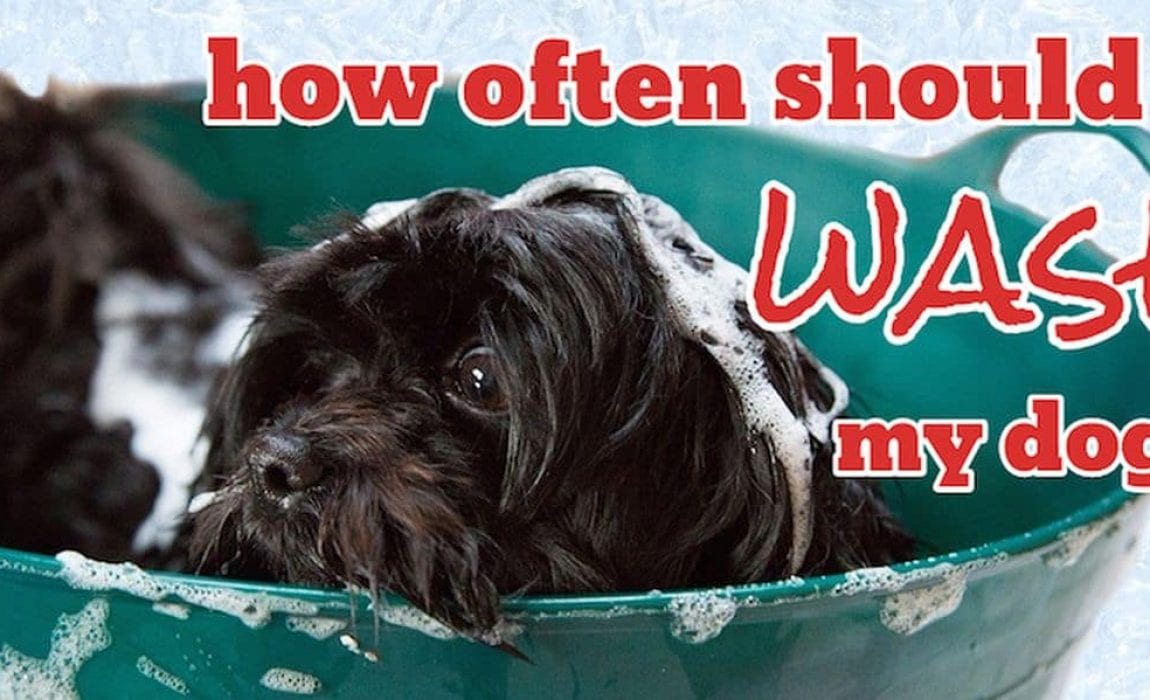
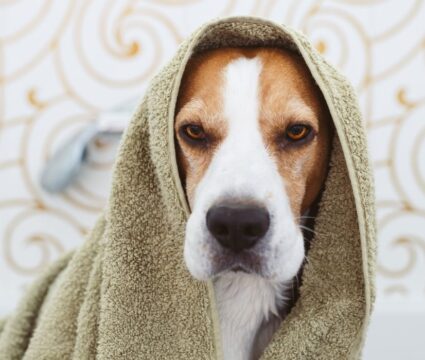



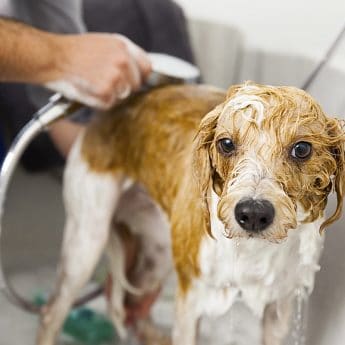
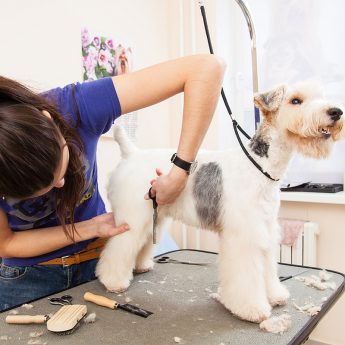
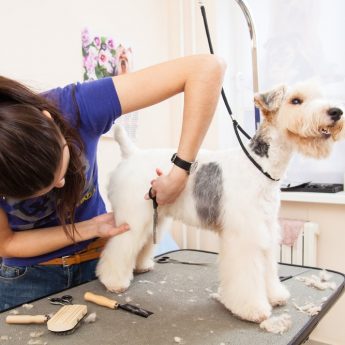
No Comments